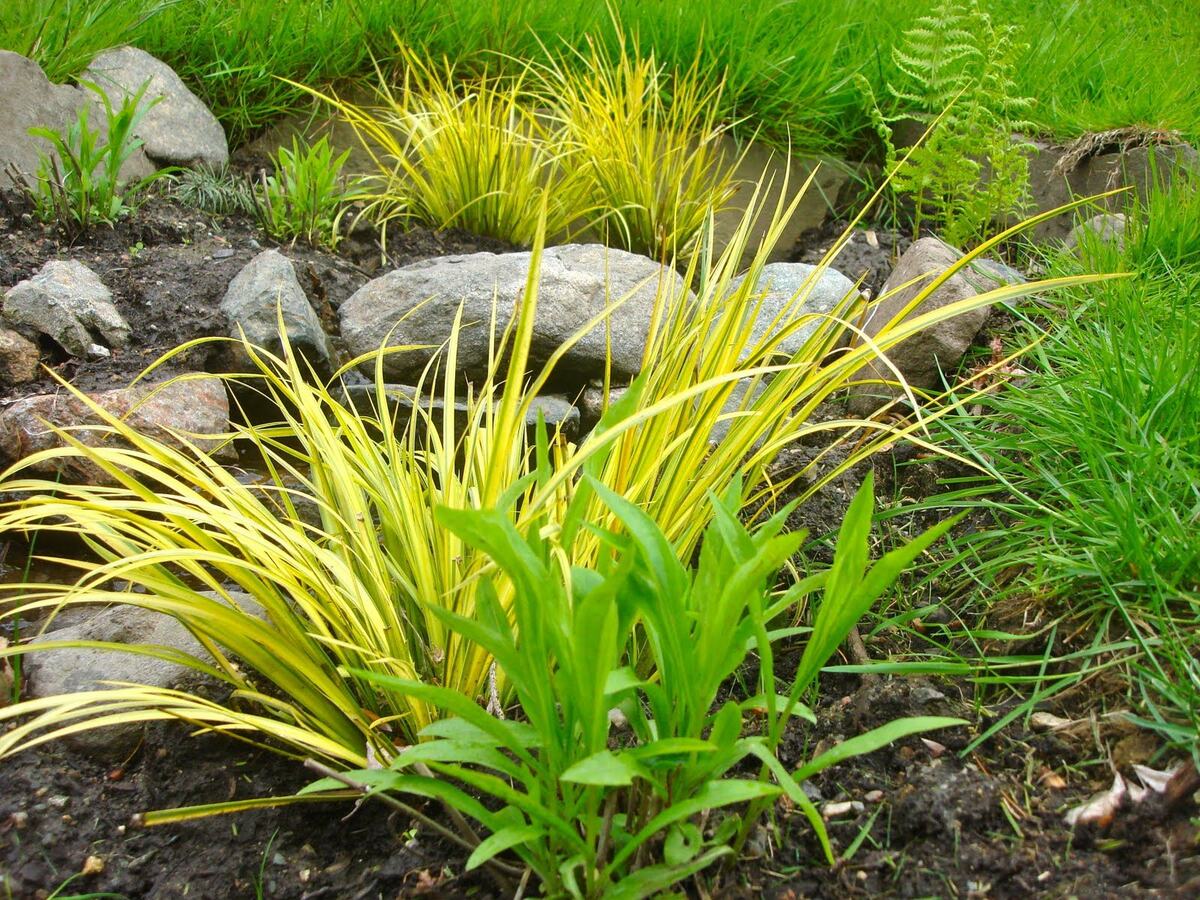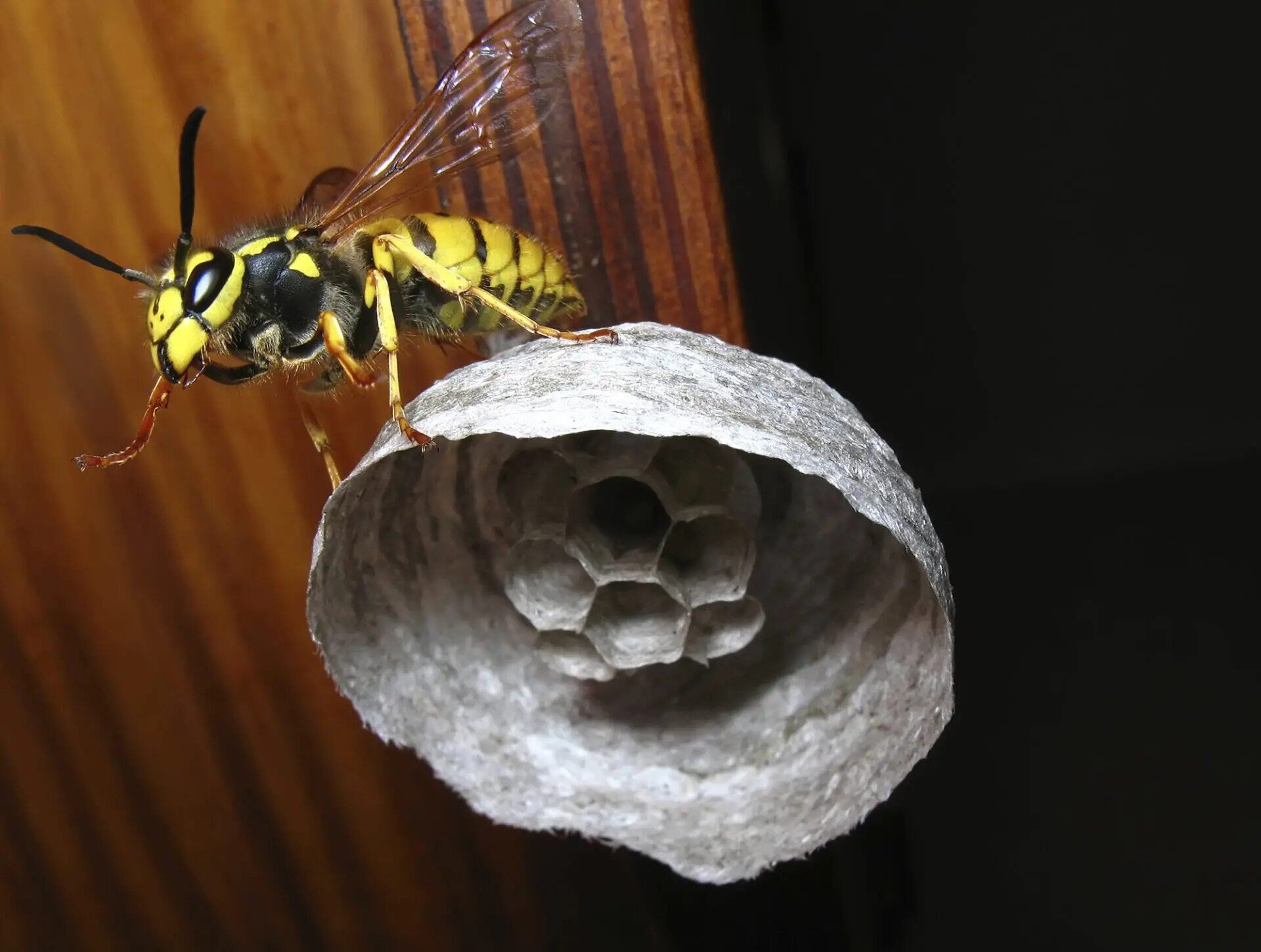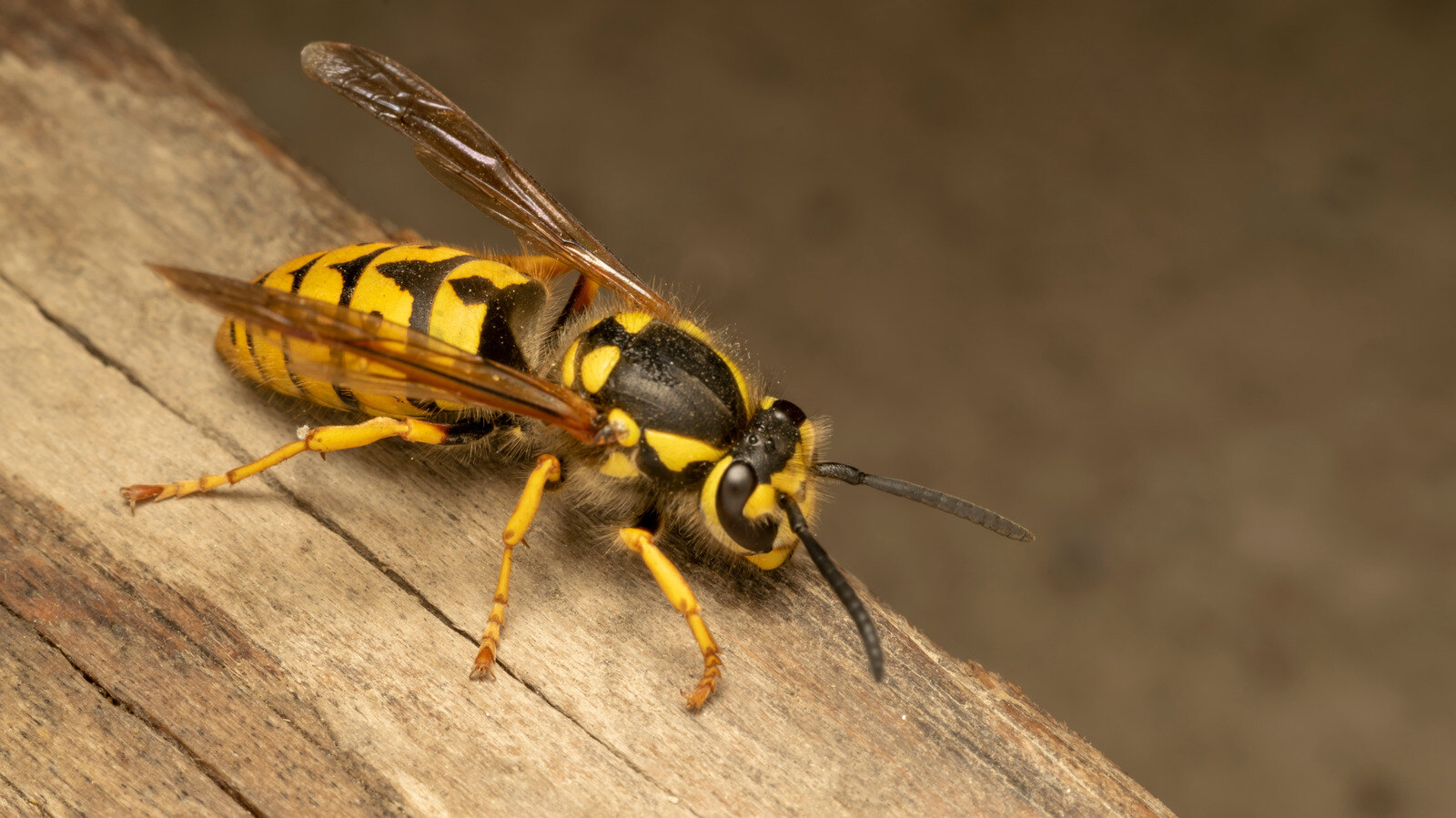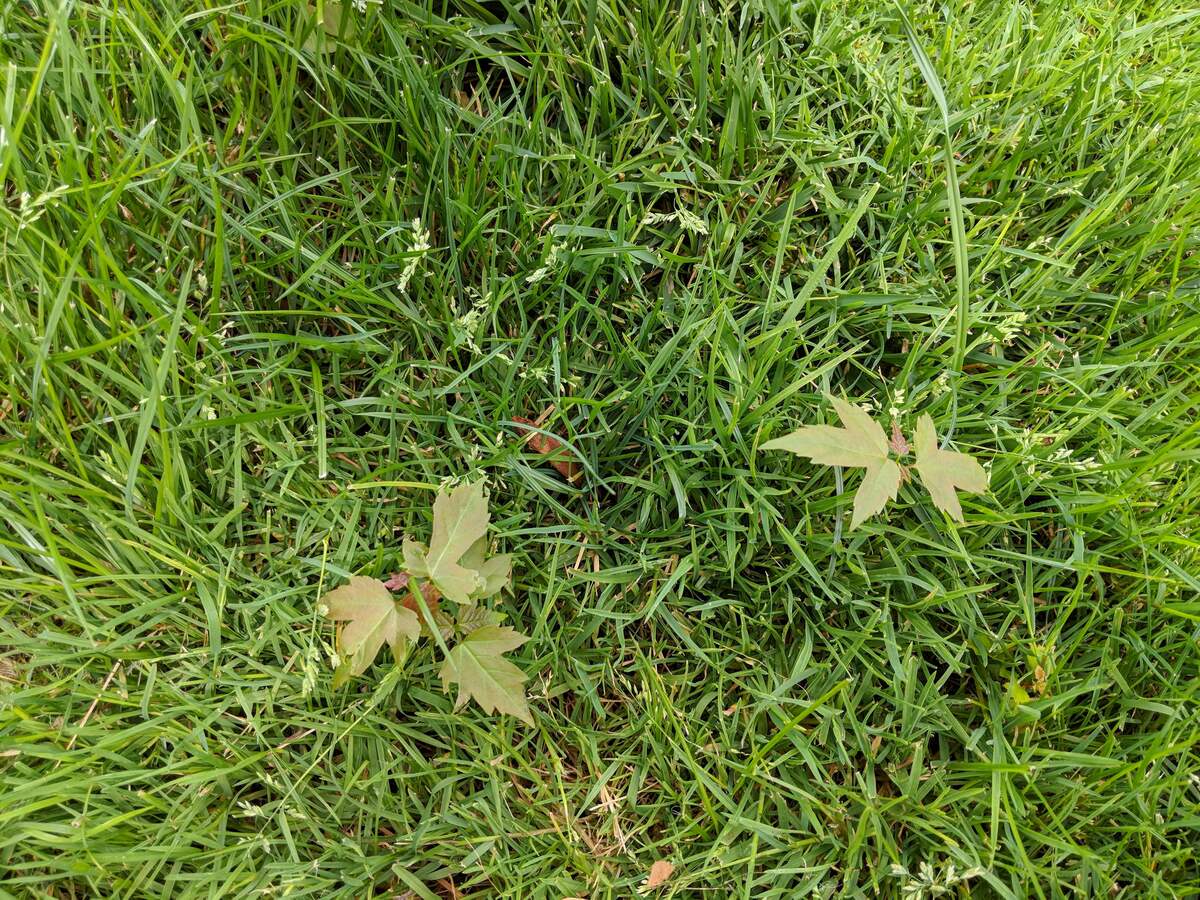Home>Gardening & Outdoor>Landscaping Ideas>How To Get Rid Of Yellow Grass


Landscaping Ideas
How To Get Rid Of Yellow Grass
Modified: February 18, 2024
Learn effective landscaping ideas to eliminate yellow grass and achieve a lush, green lawn. Discover expert tips for revitalizing your outdoor space.
(Many of the links in this article redirect to a specific reviewed product. Your purchase of these products through affiliate links helps to generate commission for Storables.com, at no extra cost. Learn more)
Introduction
Yellow grass can be a frustrating sight for any homeowner or gardener. It not only detracts from the beauty of your landscape but also indicates underlying issues that need to be addressed. Whether you're dealing with a small patch of yellow grass or a larger area, understanding the causes and implementing effective solutions is crucial to restoring the lush green appearance of your lawn.
In this comprehensive guide, we will delve into the various factors that can lead to yellow grass, ranging from improper watering and soil deficiencies to pest infestations and diseases. By gaining a deeper understanding of these underlying issues, you'll be better equipped to tackle the problem head-on and revive the vibrancy of your lawn.
Stay tuned as we explore practical tips and techniques for addressing yellow grass, including proper watering practices, fertilization strategies, and pest management. With the right knowledge and proactive measures, you can transform your yellowing lawn into a verdant oasis that enhances the overall appeal of your outdoor space.
Let's embark on this journey to reclaim the lush green beauty of your lawn and create an inviting, healthy environment for relaxation and enjoyment.
Key Takeaways:
- Don’t let yellow grass ruin your lawn! Deep, infrequent watering, balanced fertilization, and pest control are key to restoring lush greenery. With the right care, your lawn can thrive again.
- Yellow grass? No problem! Morning watering, soil aeration, and disease prevention are your secret weapons. By taking proactive steps, you can turn your lawn into a vibrant, healthy oasis.
Read more: How To Get Rid Of Yellow Jackets?
Understanding the Causes of Yellow Grass
Yellow grass can be a distressing sight, signaling an array of underlying issues that warrant attention. Understanding the potential causes of yellow grass is essential for implementing targeted solutions and restoring the health and vibrancy of your lawn.
-
Improper Watering: One of the primary culprits behind yellow grass is inadequate or excessive watering. Insufficient watering can lead to drought stress, causing the grass to turn yellow and eventually brown. Conversely, overwatering can suffocate the roots, leading to waterlogged soil and subsequent yellowing of the grass.
-
Soil Deficiencies: Nutrient deficiencies in the soil, particularly nitrogen, can manifest as yellowing of the grass. Nitrogen is crucial for healthy green foliage, and a lack of this essential nutrient can result in a pale, yellowish appearance.
-
Compacted Soil: Compacted soil restricts the movement of air, water, and nutrients to the grass roots, impeding their growth and leading to yellowing and overall decline in health.
-
Inadequate Sunlight: Insufficient sunlight exposure can hinder the photosynthetic process, which is essential for the grass to produce energy and maintain its green color. Shaded areas of the lawn may exhibit yellowing due to lack of sunlight.
-
Pest Infestations: Certain pests, such as grubs and chinch bugs, can wreak havoc on your lawn, causing the grass to yellow and wilt as they feed on the roots and foliage.
-
Disease: Fungal diseases, such as dollar spot and brown patch, can lead to yellow patches on the lawn as the grass becomes weakened and susceptible to discoloration.
By recognizing these potential causes of yellow grass, you can take proactive measures to address the specific issues affecting your lawn. In the following sections, we will explore practical tips and strategies for remedying yellow grass, from proper watering techniques and soil management to pest control and disease prevention. Understanding the underlying causes is the first step toward reclaiming the lush green beauty of your lawn and fostering a healthy, vibrant outdoor space.
Tips for Getting Rid of Yellow Grass
Addressing yellow grass requires a multifaceted approach that targets the underlying causes while promoting the overall health and vitality of your lawn. By implementing the following tips and strategies, you can effectively combat yellowing and restore the lush green beauty of your outdoor space.
Proper Watering Techniques
-
Deep, Infrequent Watering: Instead of frequent shallow watering, aim for deep, infrequent watering sessions to encourage deep root growth and resilience against drought stress. This approach promotes a healthier, more robust lawn that is less prone to yellowing.
-
Morning Watering: Water your lawn in the early morning to minimize evaporation and ensure optimal absorption by the grass roots. Avoid watering in the evening, as prolonged moisture on the grass can invite fungal diseases and contribute to yellowing.
-
Monitor Soil Moisture: Use a moisture meter or simply observe the soil to gauge its moisture levels. Adjust your watering schedule based on the specific needs of your lawn, taking into account factors such as weather conditions and soil composition.
Fertilizing and Soil Management
-
Balanced Fertilization: Apply a balanced fertilizer with the appropriate ratio of nitrogen, phosphorus, and potassium to address any nutrient deficiencies that may be contributing to the yellowing of the grass. A well-nourished lawn is better equipped to maintain its vibrant green color.
-
Aerate the Soil: Aerating the soil alleviates compaction and promotes better air and water circulation, fostering healthier root development and reducing the risk of yellowing due to soil-related issues.
-
Soil Testing: Conduct a soil test to identify any deficiencies or imbalances in the soil composition. Based on the results, adjust your fertilization approach to provide the necessary nutrients for optimal grass health.
Dealing with Pests and Diseases
-
Integrated Pest Management: Implement an integrated approach to pest control, incorporating natural predators, cultural practices, and targeted treatments to manage pest infestations without harming beneficial organisms.
-
Disease Prevention: Practice good lawn hygiene by removing thatch, promoting proper air circulation, and avoiding excessive nitrogen fertilization, which can make the grass more susceptible to fungal diseases.
-
Prompt Treatment: If you notice signs of pest infestations or disease, take prompt action to address the issue before it escalates and causes extensive yellowing and damage to the lawn.
By integrating these tips into your lawn care routine, you can effectively combat yellow grass and create an environment where lush greenery thrives. Understanding the specific needs of your lawn and addressing the underlying causes of yellowing are essential steps toward achieving a vibrant, healthy lawn that enhances the beauty of your outdoor space.
Proper Watering Techniques
Proper watering is a fundamental aspect of lawn care that significantly impacts the health and appearance of your grass. By adopting effective watering techniques, you can mitigate the risk of yellowing and promote lush, vibrant growth throughout your lawn.
Deep, Infrequent Watering
Instead of frequent shallow watering, prioritize deep, infrequent watering sessions to encourage robust root development. When you water deeply, the grass roots are prompted to grow deeper into the soil in search of moisture, resulting in a more resilient and drought-tolerant lawn. This approach also helps prevent surface evaporation, ensuring that the water reaches the root zone where it is most beneficial. By fostering a strong and extensive root system, your grass becomes better equipped to withstand dry spells and maintain its green hue, minimizing the risk of yellowing due to drought stress.
Morning Watering
Timing plays a crucial role in effective watering, and choosing the right time of day can significantly impact the overall effectiveness of your watering routine. It is advisable to water your lawn in the early morning, ideally before 10 a.m. This timing allows the grass to absorb the moisture before the heat of the day sets in, reducing the risk of evaporation and ensuring optimal uptake by the roots. Morning watering also facilitates the drying of the grass blades, minimizing the likelihood of fungal diseases that thrive in prolonged moisture. By adopting this practice, you can maximize the benefits of watering while minimizing potential issues that can contribute to yellowing and overall lawn health.
Read more: How To Get Rid Of Yellow Jackets In Siding
Monitor Soil Moisture
Understanding the moisture needs of your lawn is essential for maintaining optimal hydration without overwatering. Using a moisture meter or simply observing the soil can provide valuable insights into the moisture levels and help you adjust your watering schedule accordingly. Factors such as weather conditions, soil composition, and the specific requirements of your grass type should be taken into account when determining the frequency and duration of watering sessions. By monitoring soil moisture and adapting your watering practices to suit the unique needs of your lawn, you can prevent yellowing caused by both drought stress and waterlogging.
Incorporating these proper watering techniques into your lawn care regimen can yield significant improvements in the health and appearance of your grass. By promoting deep root growth, minimizing evaporation, and optimizing moisture uptake, you can effectively combat yellowing and nurture a vibrant, resilient lawn that enhances the beauty of your outdoor space.
Fertilizing and Soil Management
Fertilizing and soil management play pivotal roles in nurturing a healthy, vibrant lawn while addressing the underlying causes of yellow grass. By implementing targeted fertilization strategies and adopting soil management practices, you can fortify the nutrient profile of the soil, promote robust root development, and mitigate the risk of yellowing, ultimately fostering a lush, green expanse of grass.
Balanced Fertilization
Applying a balanced fertilizer with the appropriate ratio of nitrogen, phosphorus, and potassium is essential for addressing any nutrient deficiencies that may contribute to the yellowing of the grass. Nitrogen, in particular, is crucial for promoting healthy green foliage, and a deficiency can manifest as a pale, yellowish appearance in the grass. By providing the necessary nutrients through balanced fertilization, you can bolster the overall health and color of your lawn, reducing the likelihood of yellowing and revitalizing its vibrancy.
Aerate the Soil
Aerating the soil is a fundamental soil management practice that alleviates compaction and promotes better air and water circulation within the root zone. Compacted soil can impede the movement of essential nutrients and hinder root growth, leading to yellowing and overall decline in the health of the grass. By aerating the soil, you create channels for air, water, and nutrients to penetrate the root zone, fostering healthier root development and enhancing the overall resilience of the lawn. This proactive measure can significantly contribute to the prevention of yellow grass and the promotion of a thriving, verdant lawn.
Read more: How To Get Rid Of Yellow Stain In Bathtub
Soil Testing
Conducting a soil test is a valuable tool for identifying any deficiencies or imbalances in the soil composition. By understanding the specific nutrient needs of your lawn, you can tailor your fertilization approach to address any shortcomings and optimize the nutrient profile of the soil. Soil testing provides actionable insights that enable you to make informed decisions regarding fertilization, ensuring that your lawn receives the precise nutrients it requires to flourish. By leveraging the information gleaned from soil testing, you can effectively combat yellowing caused by nutrient deficiencies and create an environment conducive to healthy, green grass.
Incorporating these fertilizing and soil management practices into your lawn care routine can yield profound improvements in the overall health and appearance of your grass. By addressing nutrient deficiencies, promoting robust root development, and optimizing the soil environment, you can effectively combat yellowing and cultivate a vibrant, resilient lawn that enhances the beauty of your outdoor space.
Dealing with Pests and Diseases
Dealing with pests and diseases is a critical aspect of maintaining a healthy, vibrant lawn and addressing the underlying factors contributing to yellow grass. Pests and diseases can wreak havoc on the grass, causing discoloration, wilting, and overall deterioration of the lawn's appearance. By implementing proactive pest management and disease prevention strategies, you can safeguard your lawn against these detrimental influences and promote a thriving, green expanse of grass.
Integrated Pest Management
Integrated pest management (IPM) is a holistic approach that emphasizes the use of multiple strategies to manage pest infestations while minimizing the impact on the environment. By incorporating natural predators, cultural practices, and targeted treatments, you can effectively control pests without resorting to excessive pesticide use. This approach not only mitigates the risk of yellowing and damage caused by pests but also fosters a balanced ecosystem within your lawn, promoting the health and resilience of the grass.
Disease Prevention
Preventing diseases is paramount in maintaining the lush green appearance of your lawn. Good lawn hygiene practices, such as removing thatch and promoting proper air circulation, can significantly reduce the risk of fungal diseases that contribute to yellowing. Additionally, avoiding excessive nitrogen fertilization is crucial, as an overabundance of nitrogen can make the grass more susceptible to fungal infections. By adopting these preventive measures, you can create an environment that is less conducive to disease development, safeguarding the vibrancy and health of your lawn.
Read more: How To Get Rid Of Grasshoppers
Prompt Treatment
Vigilance is key when it comes to addressing pest infestations and diseases. If you notice signs of pest activity or disease symptoms, prompt treatment is essential to prevent the issue from escalating and causing extensive damage to the lawn. Identifying the specific pest or disease affecting your grass and employing targeted treatments can effectively mitigate the impact on your lawn's health and appearance, minimizing the occurrence of yellow patches and promoting a resilient, thriving lawn.
By integrating these pest management and disease prevention strategies into your lawn care regimen, you can effectively combat yellow grass and create an environment where lush greenery thrives. Understanding the specific needs of your lawn and addressing the underlying causes of yellowing are essential steps toward achieving a vibrant, healthy lawn that enhances the beauty of your outdoor space.
Conclusion
In conclusion, addressing yellow grass involves a comprehensive approach that encompasses proper watering techniques, fertilization, soil management, and proactive pest and disease control. By understanding the underlying causes of yellowing, homeowners and gardeners can implement targeted solutions to revive the lush green beauty of their lawns.
Effective watering practices, such as deep, infrequent watering and morning watering, can promote robust root development and mitigate the risk of yellowing due to drought stress or waterlogging. By monitoring soil moisture and adjusting watering schedules based on the specific needs of the lawn, homeowners can create an environment conducive to healthy, vibrant grass growth.
Furthermore, balanced fertilization, soil aeration, and soil testing play crucial roles in addressing nutrient deficiencies and promoting optimal soil conditions for the grass to thrive. By providing the necessary nutrients and alleviating soil compaction, homeowners can fortify the health and resilience of their lawns, reducing the likelihood of yellowing and fostering a vibrant, green expanse of grass.
Additionally, integrated pest management and disease prevention strategies are essential for safeguarding the lawn against detrimental influences that can lead to yellowing and deterioration. By adopting proactive measures and promptly addressing pest infestations and disease symptoms, homeowners can create a balanced ecosystem within their lawns, promoting the overall health and vibrancy of the grass.
In essence, combating yellow grass requires a proactive and multifaceted approach that addresses the specific needs of the lawn while targeting the underlying causes of yellowing. By integrating the tips and strategies outlined in this guide, homeowners and gardeners can reclaim the lush green beauty of their lawns and create an inviting, healthy outdoor environment for relaxation and enjoyment. With the right knowledge and proactive measures, yellow grass can be transformed into a vibrant, resilient lawn that enhances the overall appeal of the outdoor space.
Frequently Asked Questions about How To Get Rid Of Yellow Grass
Was this page helpful?
At Storables.com, we guarantee accurate and reliable information. Our content, validated by Expert Board Contributors, is crafted following stringent Editorial Policies. We're committed to providing you with well-researched, expert-backed insights for all your informational needs.












0 thoughts on “How To Get Rid Of Yellow Grass”